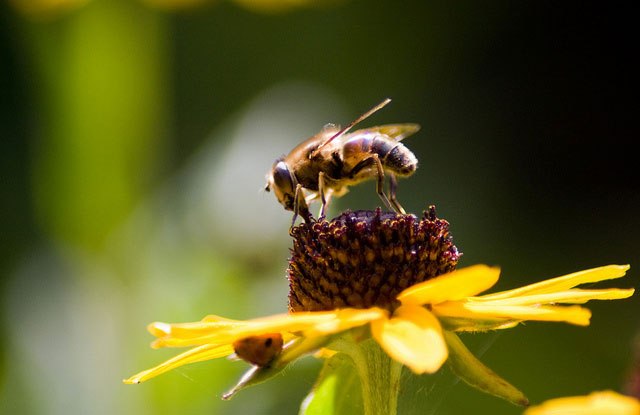
Scientists have known for some time that a combination of factors is likely responsible for the dramatic honeybee die offs witnessed in recent years. Now, researchers believe that one such factor could be a virus that we humans have inadvertently help spread.
Much has been written about the risks posed to our honeybees by commonly used insecticides. We’ve also heard that biodiversity loss has increased the pressures on honey bees. Various other issues, including mite infestations, have also been highlighted as potential causes of Colony Collapse Disorder, but that doesn’t get as much press at the moment.
However, researchers from the University of Exeter in the UK and UC Berkley have determined in a new study that the European honeybee is “overwhelmingly” the source of Deformed Wing Virus that has ravaged colonies worldwide. The virus tends to weaken bees and shorten their lives considerably. What’s more, it’s human activity that appears to have enabled that virus to spread.
Researchers analyzed Deformed Wing Virus samples taken from honeybees and Varroa mites across seventeen countries. Investigations have found that the parasitic Varroa mites exacerbated an existing threat from the virus.
After contracting Deformed Wing Virus, mites can inject it directly into bees when they bite and feed. Varroas previously just affected Asian bees, but they were eventually introduced into Europe, where they caused the infection rate among European honeybees to increase dramatically. But that still doesn’t explain how widespread the virus has become. And that’s where humans come in.
Using information about the Varroa mites, researchers were able to trace the epidemic back to Europe. They believe that the virus then spread to North America, Australia and New Zealand. While, admittedly, there was two-way movement in some cases, the spread of the virus closely matched the human transport of honeybees from Europe into other geographic locations. Essentially, by exporting the bees we created a pandemic.
What’s worse, there is evidence that honeybees themselves are now spreading Deformed Wing Virus. When their saliva and feces comes into contact with plants they share with other pollinators, the virus can infect and endanger other bee species too.
As an aside, we know bumblebees and other pollinators appear less resilient to the threat of neonicotinoids than honeybees, so adding the relatively new threat of Deformed Wing Virus may explain the dramatic colony losses that bumblebees are experiencing.
So what does that mean for us and how do we stop this problem?
Dr. Lena Wilfret, the senior author of this study, explained: “We must now maintain strict limits on the movement of bees, whether they are known to carry Varroa or not. It’s also really important that beekeepers at all levels take steps to control Varroa in their hives, as this viral disease can also affect wild pollinators.”
While controls on the spread of bee populations already exist, advocates say that interstate transportation is lax and border vet checks are not preventing the spread of the virus. If the agricultural sector wants to keep honeybees alive – and it needs them – it must look at more ways to stop this virus from spreading.
Governments, too, must act to tighten regulations around bee transport to make sure screenings are effective and bees are not being transported unless absolutely necessary. That will be costly, but in the long run it could cost far more in terms of interruptions to our food supply if we don’t act now.
Press freedom is under attack
As Trump cracks down on political speech, independent media is increasingly necessary.
Truthout produces reporting you won’t see in the mainstream: journalism from the frontlines of global conflict, interviews with grassroots movement leaders, high-quality legal analysis and more.
Our work is possible thanks to reader support. Help Truthout catalyze change and social justice — make a tax-deductible monthly or one-time donation today.